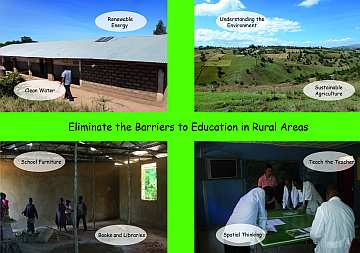Education for integrated and sustainable development in rural Areas
The main reason why education has marginal impact (if any) on development in rural Ethiopia is because of absence of linkage between education and community needs.
>> School curriculum in Ethiopia is focused on development of academic and reading skills.
However, there are neither books nor newspapers in a typical village. There is no life skill training targeted to improving productivity of agricultural labour and land, personal hygiene or the environment.
Tokumma reflects the situation in a typical rural village in Ethiopia: There is virtually no non-farm employment.

Vision
's vision is an equal and just world in which poverty and social injustice are eradicated and basic human rights and a decent quality of life are assured. In our interconnected global society, we are all responsible for our actions and our common wellbeing.
We believe education is a vital tool to promote understanding and give disadvantaged children the tools to achieve their full potential as tomorrow's global citizens.
Mission
Providing access to quality education for children aged 7-18 in Ethiopia, with the broader aim of empowering people to lift themselves and their communities out of poverty.
Fostering positive communication and interaction between people of different cultures in order to raise awareness of similarities, shared goals and our global interdependence.
Learning by tackling the real-world challenges to raise a sustainable change of its own behavior in an environmentally conscious way.
The Camp 2016
Together with Link Ethiopia we plan a camp for Ethiopian as well as Swiss students exercising an real-world project in the field of sustainable agrigulture facing the current geographical challenges like:
* soil erosion
*
deforestation
*
drought
Understanding this challenges we introduce the power of maps. We sketch or design the environment with environmental objects like wood, stones, gras, leaves to croquis drawings or natural maps.
We explore the environment and capture the hot locations and document the problems. Back in school we bringt all the findings together in the croquis and analyse the collection and try to find patterns.
At the end we hope to recognize the reasons and required action of these hot locations that will help to define targeted and efficient measures for the future.

